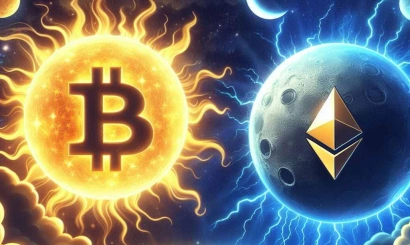Experts talked about how cryptocurrencies will behave when former miners of the leading altcoin switch to them, and what awaits a new ETHW token if the EthereumPoW hardfork is successfully launched
On September 15, the Ethereum community experienced a long-awaited event - the transition from mining to mining. The Merge update was successfully completed, and owners of cryptocurrency mining equipment began to reconfigure it to mine other coins.
As a result, the Ethereum Classic (ETN) network's processing power more than doubled to 210 terrains per second (Th/s) in the first three hours after The Merge, and the Ravencoin blockchain (RVN) hashrate has already grown to 21 Th/s, although during the year this figure was at the level of 3-4 Th/s.
At the same time, a team of blockchain developers led by famous Chinese miner Chandler Guo announced the imminent launch of the fork of the EtherumPow network, which will support the mining of ETHW tokens.
Experts talked about the prospects of mining alternative ETH cryptocurrencies, as well as what's in store for the new token that could come at the launch of the Ethereum PoW hardfork.
"Miner Overflow.
Based on real-time data, we see that computing power from Ethereum is largely shifting to Ethereum Classic (ETC) and Ravensoin (RVN), says BitCluster investment director Thomas Galovich. According to the expert, due to the increase in computing power, the complexity of mining grows proportionally. He explained that, therefore, it is likely that without a significant increase in the price of coins, the profitability of their mining can not be achieved in the long term.
The overflow of miners to such coins will reduce the profitability of their mining, which previously was inferior to Ethereum, agreed with the previous expert, the head of the ICB Fund investment department Aaron Chomsky. However, he clarified that it will drive inefficient industry players out of the market, which in turn will lead to hashrate stabilization.
"There's a surge in volatility.
There is a strong correlation between price and the amount of processing capacity on the network, Chomsky noted. He pointed out that the price of Ethereum Classic was up 1.7% and Ravencoin was up 1.5% amid neutral market dynamics overall. Assets with a much smaller capitalization showed a stronger jump in price - Cortex (+2.6%), Ergo (+14.3%), Firo (+39.4%), the expert noted.
At the same time, he paid attention to the fact that profit expectations fixation in Ethereum itself (-2.2%) was moderate at first after the "merger". But the positive dynamics of alternative coins for miners may not actively continue, the expert believes.
Now we see a surge in the volatility of Ethereum Classic and Ravencoin, the TradingView analyst noted. He noted that the prices of these tokens rose on expectations before the hardfork. However, the expert doubts that the coins will continue to rise in price, because the overall situation in the market has a pronounced bearish nature
Project with a cloud future
The ETHW fork could happen a day after The Merge, the head of ICB Fund's investment department reminded us. In his opinion, it's clear that most of those who got the coin will be happy to convert it into cash (it's currently worth about $38.2), as the future of the project is murky.
Stablecoin issuers, NFT trading floors, DeFi-projects and infrastructure companies have said they will only support the PoS asset, the expert says. Whether miners have enough resources to duplicate the ecosystem from scratch, and whether the community will follow is more of a rhetorical question.
He noted that EthereumClassic hasn't actually formed an ecosystem. It is likely that ETHW may meet the fate of bitcoin forks: the project will not die, but it will not be of great value, the expert suggested.
The combined ETC and RVN hash rate gains are only a fraction (0.065%) of the total computing power (1,000 TH/s) allocated to the Ethereum network on September 1, said BitCluster Investment Director. The question arising from this simple calculation, he says, is where to allocate the rest of the power.
The expert thinks it will likely be ETHW. The Ethereum PoW fork will exist if enough hash power is switched to it and if it is accepted by the community and developers, Galovic believes. He explained that other cryptocurrencies simply won't be able to accommodate such a huge amount of hashrate.





_410x245_00e.webp)


